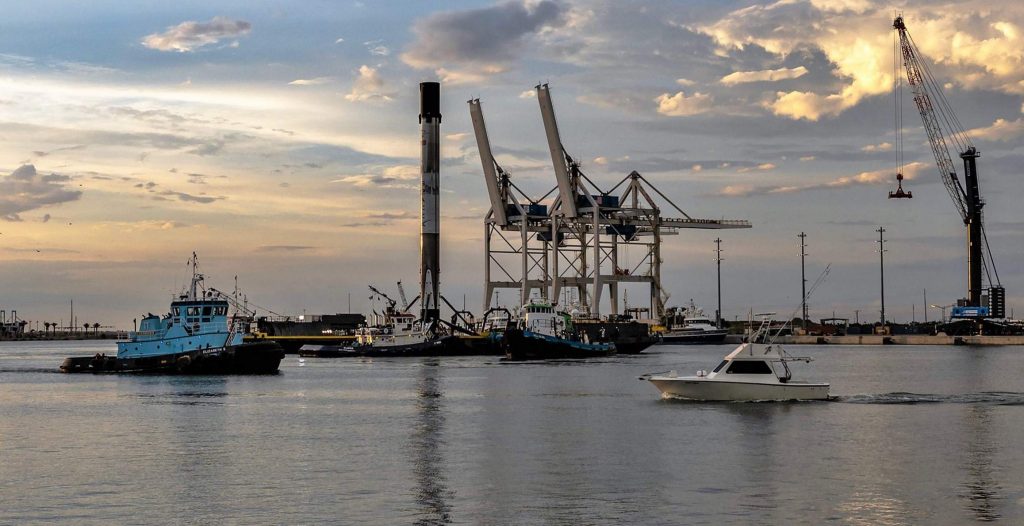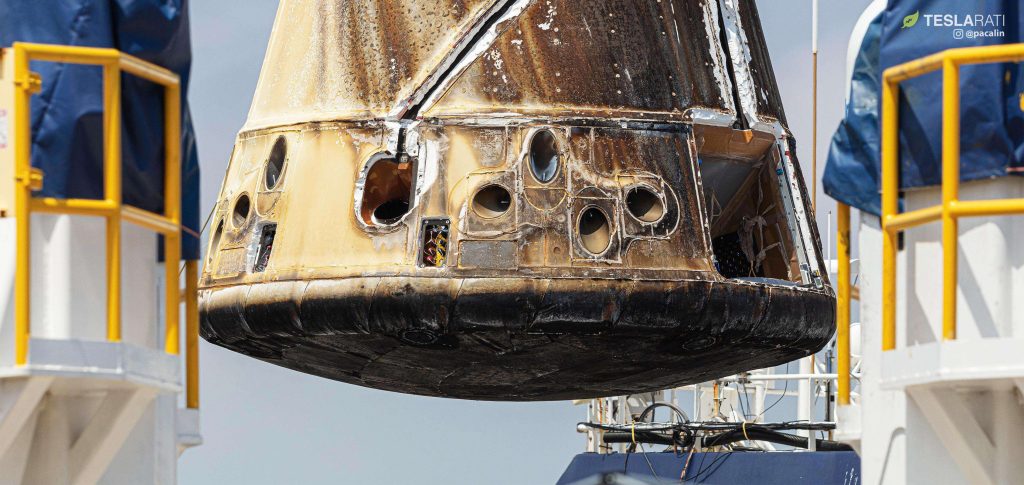After multiple days of delays, many a finger is crossed that SpaceX will be able to perform a critical static fire test of Falcon 9 booster B1056.1 on Friday morning (July 19th).
Falcon 9 B1056 and a fresh upper stage are scheduled to launch Cargo Dragon mission CRS-18 no earlier than 7:35 pm EDT (23:35 UTC), July 21st. As always, SpaceX requires each Falcon 9 rocket to successfully perform a static fire ignition test prior to declaring launch readiness, and B1056 was originally planned to be loaded with propellant and fire its nine Merin 1D engines on Wednesday, July 16th.
After a solid handful of slips, the test has most recently been rescheduled on Friday morning, a delay of 48 hours. SpaceX has demonstrated a three-day turnaround between static fire and launch with Falcon 9 Block 5, but a static fire delay beyond Friday – perhaps even beyond early Friday afternoon – will almost certainly push CRS-18’s launch back a day or two. If not, SpaceX is certainly cutting it close to make the current July 21st date.
In support of Cargo Dragon Commercial Resupply Mission-17 (CRS-17), Falcon 9 B1056 launched for the first time on May 4th, roughly 11 weeks (76 days) ago and 78 days before its planned return to flight. For both SpaceX and NASA, CRS-18 will be a fairly significant launch for a variety of reasons

Falcon2
First and foremost, Falcon 9 B1056 previously supported a NASA Cargo Dragon mission, as described above. Even before the booster successfully landed and returned to port, plans were already in order to essentially keep the booster “in family”, reusing it for NASA launches only. Discussed on Teslarati immediately after the subject was broached during a post-launch press conference, NASA manager Kenny Todd didn’t split hairs.
“Quite frankly, [NASA] had a vested interest in this particular booster. We were gonna require it – the intent is to [reuse B1056 on SpaceX’s upcoming CRS-18 launch] and – potentially – CRS-19.”
Kenny Todd, ISS Operations and Integration Manager, NASA Johnson
Not only will NASA fly Cargo Dragon’s CRS-18 mission on B1056, but the agency is already actively considering reusing the same Falcon 9 booster – assuming a successful launch and landing next week – on CRS-19, SpaceX’s second-to-last Dragon 1 (i.e. Cargo Dragon) launch. If all goes well with CRS-18, CRS-19 could come as early as December 2019, while CRS-20 – likely Dragon 1’s last launch ever – is scheduled no earlier than March 2020 and could certainly make use of B1056.3 if NASA is interested.
Dragon3
Meanwhile, although neither SpaceX or NASA have confirmed it, the Cargo Dragon capsule flight-proven Falcon 9 B1056 will itself be flight-proven – although that’s nothing shocking after a full half-dozen successful launches of reused capsules. What will be exceptional, however, is the likely event that CRS-18 will mark the first time that SpaceX has launched the same Cargo Dragon capsule on its third orbital mission.
Speaking all the way back in summer 2017, now two years distant, SpaceX CEO Elon Musk revealed that Cargo Dragon (Dragon 1) was designed at the outset to be reused three times. Almost exactly 24 months later, SpaceX is likely to prove that that is the case. Based on a list of known Dragon 1 capsules and their serial numbers, SpaceX has already launch and reused all but one of the last seven capsules built and successfully recovered. Capsule 107 (C107) supported CRS-5 in January 2015 and was successfully recovered one month later.

Aside from CRS-7 capsule C109, destroyed in June 2015 during Falcon 9’s first and only in-flight failure, all other capsules (C108-C113) have been successfully launched, recovered, and relaunched. As such, it seems extremely improbable that CRS-5 capsule C107 will be supporting CRS-18. Instead, one of SpaceX’s six twice-flight-proven orbital spacecraft has likely been refurbished for the final time, preparing to become the first orbital-class commercial spacecraft to be reused twice.
Thy Holy Stripe
Finally, it also appears that CRS-18 will mark the debut some sort of on-orbit Falcon upper stage test, hinted at by a grey ring wrapping what looks like just a portion of its fuel (RP-1/kerosene) tank. The objective of this modification is unclear, although chances are good that either NASASpaceflight.com or SpaceX itself will provide at least a bit more information in the coming days.
Check out Teslarati’s newsletters for prompt updates, on-the-ground perspectives, and unique glimpses of SpaceX’s rocket launch and recovery processes.

<!–
–>
var disqus_shortname = «teslarati»;
var disqus_title = «SpaceX Falcon 9 nears NASA’s first flight-proven Block 5 launch after static fire delays»;
var disqus_url = «https://www.teslarati.com/spacex-falcon-9-flight-proven-nasa-launch-static-fire/»;
var disqus_identifier = «teslarati-109417»;

